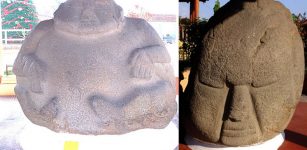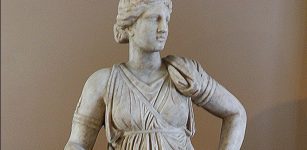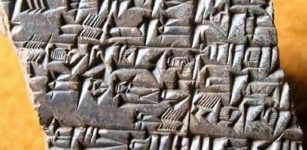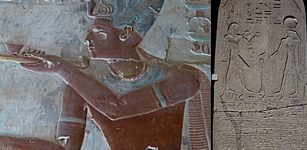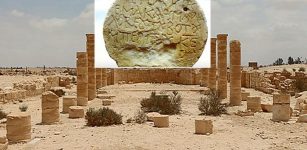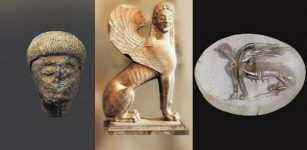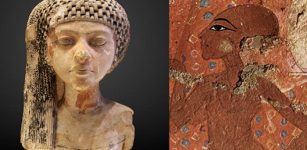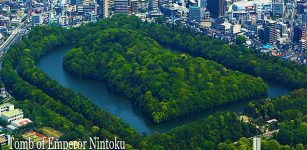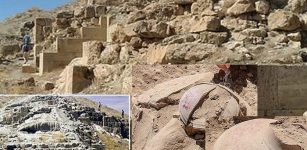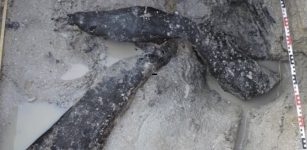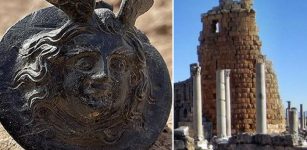Rare Roman Mosaic Of Amazon Warriors Unearthed In Syria Hailed As Major Archaeological Discovery
Jan Bartek - AncientPages.com - Archaeological excavations in Syria are currently difficult and dangerous, especially in zones occupied by rebels. The recent finding has already been hailed as a major archaeological discovery and shows that courageous scientists in Syria refuse to give up and continue their work despite the harsh environmental conditions. being an archaeologist in Syria has been extremely difficult since the conflict began 11 years ago.
People look at a large mosaic that dates back to Roman era in the town of Rastan, Syria, Wednesday, Oct. 12, 2022. Syrian officials said it is the most important archaeological discovery since the conflict began 11 years ago. Credit: AP Photo/Omar Sanadiki
Journalists have been allowed to see and photograph the recently discovered ancient mosaic in the central town of Rastan near Homs, Syria's third-largest city. The Roman mosaic remains intact and was found in an old building that Syria's General Directorate of Antiquities and Museums had been excavating. Lebanese and Syrian businessmen from the neighboring country's Nabu Museum bought the property that dates back to the 4th century and donated it to the Syrian state.
The rare mosaic depicts scenes with Amazon warriors. Credit: AP Photo/Omar Sanadiki
The beautiful ancient Roman mosaic covers 120 square meters (around 1300 square feet). Each of its panels is filled with square-shaped, small colorful stones measuring about half an inch on each side.
Dr. Humam Saad, the associate director of excavation and archaeological research at the directorate, explained that the mosaic is rare because of its unusual depictions. For one thing, it shows rare scenes of Amazon warriors in Roman mythology.
"What is in front of us is a discovery that is rare on a global scale," Saad told The Associated Press, adding that the images are "rich in details," and includes scenes from the Trojan War between the Greeks and Trojans.
In Greek and Roman mythology, the demigod hero Hercules slayed Hippolyta, queen of the Amazons, in one of his 12 labors. The mosaic also portrays Neptune, the Roman sea god, and 40 of his mistresses.
A detail of a large mosaic that dates back to Roman era is seen in the town of Rastan, Syria. Credit: AP Photo/Omar Sanadiki
Saad told journalists archeologists are not ready with excavations yet, and it's too early to determine what type of building it was once. It is possible it was a public bathhouse, but it may have served a different purpose.
The Associated Press reports, Sulaf Fawakherji, a famous actress in Syria and a member of the Nabu Museum's board of trustees said she hopes they could purchase other buildings in Rastan, which she says is filled with heritage sites and artifacts waiting to be discovered.
"There are other buildings, and it's clear that the mosaic extends far wider," Fawkherji told the AP. "Rastan historically is an important city, and it could possibly be very important heritage city for tourism."
Despite Rastan's historical significance in the country, Saad says there have not been significant excavation efforts in the town before the country's armed conflict.
"Unfortunately, there were armed groups that tried to sell the mosaic at one point in 2017 and listed it on social media platforms," he said.
Syrian heritage sites have been looted and destroyed over the past decade of ongoing violent conflict.
Rastan was once a major opposition stronghold and was a point of intense clashes before the Syrian government reclaimed the city in 2018.
See also: More Archaeology News
AP reported that "among the most notable incidents was the Islamic State group taking Palmyra, a UNESCO World Heritage Site that boasts 2,000-year-old towering Roman-era colonnades and priceless artifacts, and partially destroying a Roman theater. Meanwhile, Syria's cash-strapped government has slowly been rebuilding Aleppo's centuries-old bazaar after reclaiming it from armed opposition forces in 2016."
Written by Jan Bartek - AncientPages.com Staff Writer




